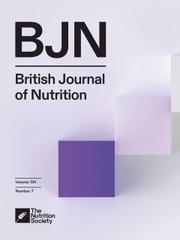Article contents
Curcumin ameliorates the effects of high-fat diet-induced obesity via activating the DNA repair response
Published online by Cambridge University Press: 02 June 2025
Abstract
Curcumin, a natural bioactive compound, is known to exert therapeutic effects on cancer and dysplasia. However, less is known about its effects on DNA damage and repair in obesity. Therefore, this study was to examine the novel role of curcumin in regulating DNA repair signalling using a high-fat diet (HFD)-induced obesity in mice. Male C57BL/6 mice were fed either a 60 % HFD or standard chow with curcumin (2·5 g/kg diet) for 8 weeks. We observed that curcumin alleviated weight gain, preserved glucose balance and enhanced liver fat accumulation and lipid profile in mice with obesity induced by an HFD. Curcumin enhanced the adipocyte-derived mesenchymal stem cell (ADMSC) population (Sca-1 + CD45-) and expression of phosphorylated checkpoint kinase1 (pCHK1), a DNA repair gene, in adipocytes isolated from adipose tissues of HFD-induced obesity in mice. Moreover, in human preadipocytes, treatment with 10 μM curcumin effectively reduced the mRNA levels of IL6 and CCL2 in a dose-dependent manner, while treatment with 100 μM H2O2 together with curcumin upregulated the levels of pCHK2 and total CHK2 protein and reduced level of γH2AX, a biomarker of DNA damage. In addition, curcumin inhibits preadipocyte-to-adipocyte differentiation. In conclusion, our data demonstrated that curcumin reduced the pro-inflammatory response and DNA damage in adipocytes, controlling weight gain in mice with HFD-induced obesity.
Information
- Type
- Research Article
- Information
- Copyright
- © The Author(s), 2025. Published by Cambridge University Press on behalf of the Nutrition Society
References
- 1
- Cited by


